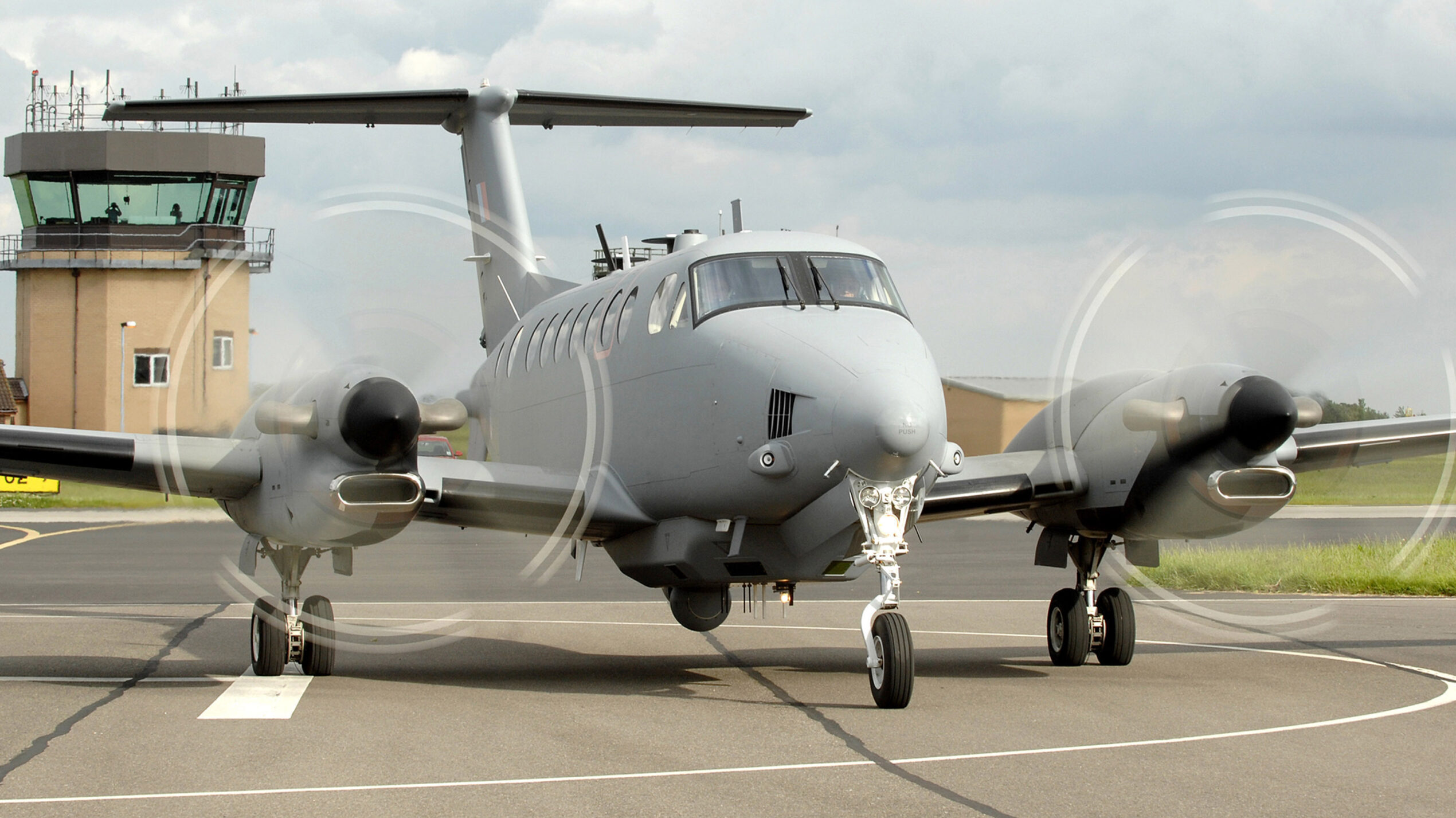
This Shadow R1 aircraft of 5 (AC) Squadron based at RAF Waddington. The Shadow will get new air protection equipment in 2023. (RAF)
FARNBOROUGH AIRSHOW: The UK Ministry of Defence here on Monday officially unveiled “Team Pellonia,” a new collaboration to equip air platforms with next-generation self-protection solutions.
Led by the Royal Air Force (RAF), Defence Equipment and Support and the Defence Science Technology Laboratory (Dstl), Team Pellonia also features industry partners from across the UK, including Leonardo, Chemring Countermeasures and Thales.
According to the MoD, Team Pellonia is tasked with integrating “self-protection systems for UK armed forces’ platforms, with a mission to ensure that aircraft crews can respond to emerging threats with life-saving speed and agility.” The new program will build on NATO’s existing Next Generation Air Survivability (NGAS) framework which was established by the UK and adopted across the NATO air survivability community last year. The goal of NGAS is to enable NATO members to create a cohesive self-protection setup for allied aviation assets.
Speaking at the airshow, Air Vice-Marshal Lincoln Taylor, the RAF’s chief of staff for capability, described the “importance of control of the air” after observing the ongoing war in Ukraine.
“Threats we are seeing haven’t surprised us, but only reinforced the importance of integrated air defense and air platform protection. It’s what we’ve been tracking for a long time,” he said. “Survivability is at the heart of the UK’s operational independence. As part of Team Pellonia, the UK MoD will strive to ensure that UK NGAS capabilities are available to meet the UK’s air platform protection requirements.”
RELATED: UK says next-gen fighter demonstrator to take off within 5 years
Over the past 12 months, the MoD has been signing strategic partnership arrangements with the three industry partners. This means that despite just being made public on Monday, Team Pellonia is already under contract to deliver NGAS to the RAF’s fleet of Shadow ISR aircraft as well as E-7 Wedgetail Airborne Early Warning aircraft.
Shadow is in the process of being equipped with a “core functionality” at the moment, Taylor confirmed. It expects to fly with NGAS in 2023, he added.
A similar timeframe has been agreed for the E-7, although physical integration has yet to begin, an MoD official confirmed to Breaking Defense.
“Looking to the future, a number of UK air platforms will be reviewed in the coming years,” the official said.
Team Pellonia is working closely with NATO and Five Eyes air survivability working groups, with Taylor stating “We are considering how to federate into NATO and our allies. I don’t want [the UK] to be better protected than our allies.” As a result, NGAS integration will meet NATO’s capability guidance for air protection — formally Standardisation Agreement 4781, or STANAG 4781 —in order to bring plug and play integration.
On a technical level, Team Pellonia will integrate platform-level integrated self-protection systems based on Leonardo’s Modular Advanced Platform Protection System (MAPPS) architecture.
“Depending on the platform requirements, sensors and effectors could include Leonardo’s Miysis Directed Infrared Countermeasure (DIRCM), Thales’s Elix-IR Threat Warning System (TWS), Thales’s Vicon XF Countermeasures Dispensing System (CMDS) and Chemring’s full suite of expendable countermeasures,” an MoD statement stated.
Taylor also described Team Pellonia’s intent to introduce spiral upgrades across the RAF fleet, adding: “Success can be keeping a weapon on the rail as well as launching it. We want to adopt a more spiraled and best-in-class approach when they need it and not en route in ten years’ time.”
Dstl’s division head for platform systems, Matt Chinn, also described how Team Pellonia aims to move away from a library-based approach to threats to a more agile approach to recognizing emerging threats.
“Systems can operate and interpret data in a rapid feedback loop,” he suggested.
Also speaking at the briefing, Alex Keyse, optronics and missile electronics sales director at Thales, said an export working group was also being set up to explore international opportunities.
Taylor also confirmed to Breaking Defense that there would be opportunities within the MoD’s Future Combat Air System (FCAS) program: “FCAS is generating new capability and we are looking for early adoption of technology for Team Pellonia. This includes de-risking size, weight and power for larger platforms,” he said.
In conclusion, Taylor described program success for Team Pellonia as being able to keep the warfighter “safe and assured” when deployed on operations: “When they face threats, they are able to respond in a far more agile way,” he said.






















